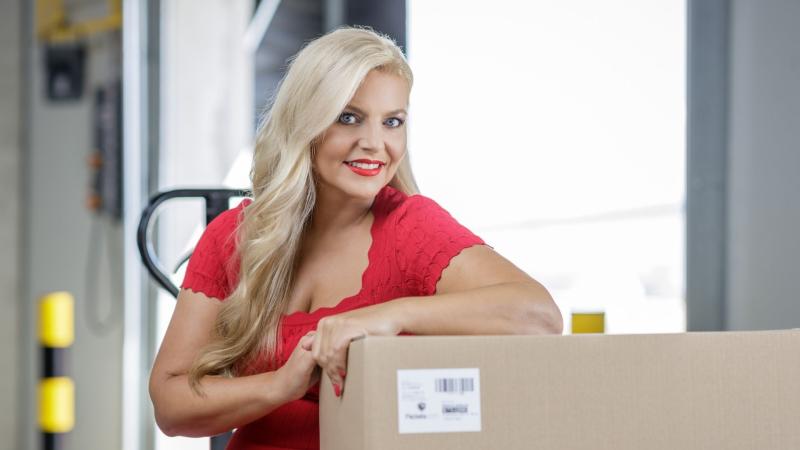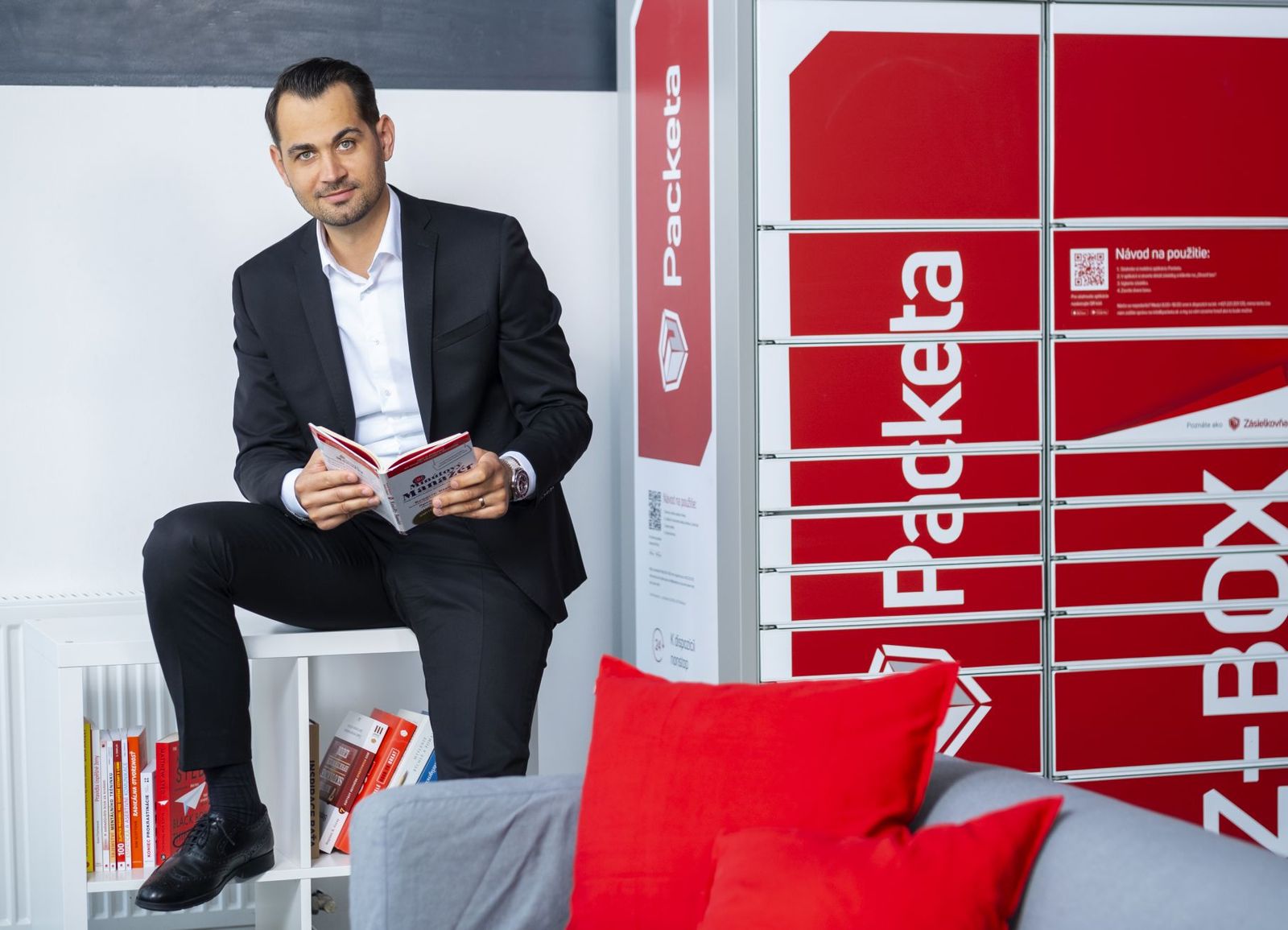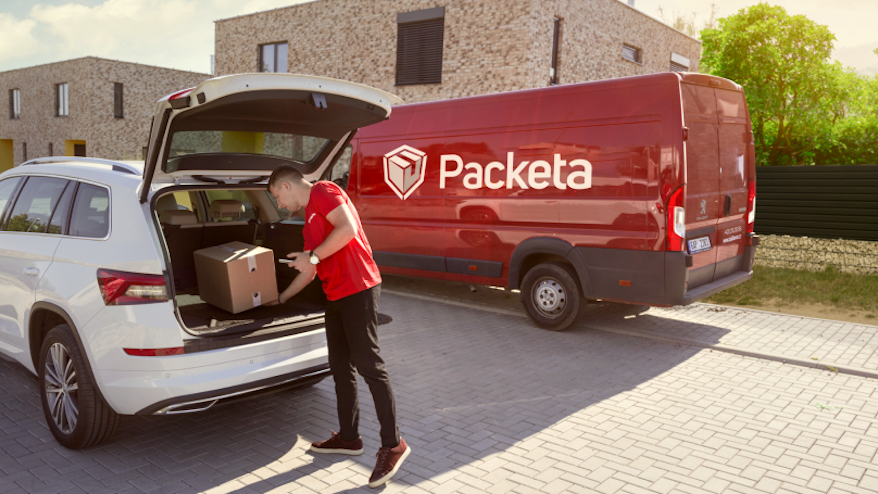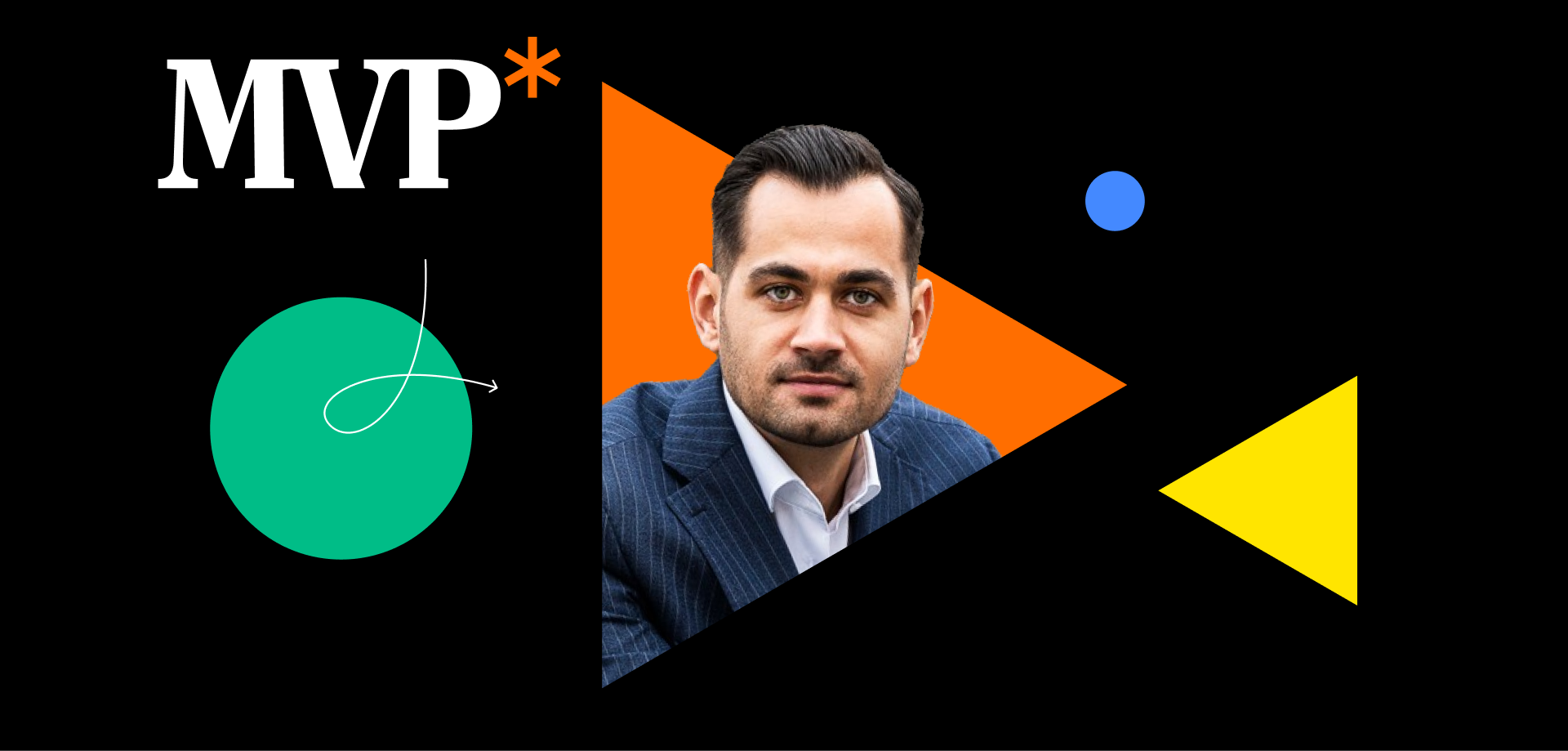Logistics is a complex discipline with many variables. Building a good customer experience within it is therefore even more challenging. However, Packeta proves that it's possible. Each year they rank in the TOP 10 of CX ranking compiled by KPMG.
In the 23rd episode, Michal Blažej speaks with Alexander Jančo, Managing Director of Packeta Slovakia. They discuss how Packeta came into existence, how they build customer experience across thousands of pickup points, and where they see the future of the delivery industry.
Minimum Viable Podcast is brought to you by the CX design studio Lighting Beetle*. It's usually recorded in the Slovak language, however, you can read an English transcription of this episode below. For more English content, including case studies and handouts, visit our Journal.
The first question is, what sets Packeta apart from the competition?
I think we have a team that can execute our strategy well. Also within the logistics segment, we are most focused on the customer. We look at the customer differently and we ask them how they would imagine these services, and what is comfortable for them.
You mentioned that you have a good team that can execute the strategy well. Could you give an example of something in the past that you accomplished? A strategic goal that made you exceptional on the market?
That's about two years ago when we grew acquisition-wise in the delivery to address product. Then we decided to acquire the company Remax Courier Service. I am very data-oriented as well as our company. We adhere to the idea that a person without data is just a person with an opinion.
So before, I did research, where I found out what people want and what they need and what bothers them about delivery to the address. Everyone was bothered by not seeing the exact delivery time. So with colleagues, we formed a team and I got into it and I said let's deliver at an exact time.
And we succeeded. Of course, it has a standard curve that happens with changes. Some people doubted it. We had to replace some couriers who refused to be under such scrutiny because it means that the courier doesn't plan his day according to themself, but the software creates a route for them. They choose some segments of breaks they need but they must stick to it precisely.
That sounds like a success story. So you are a Czech-Slovak company. I'm not entirely clear about the structure. Could you just tell me how you are divided?
I would start by saying that our founder Simona Kijonková is a very good boss who gives freedom to individual Managing Directors in each country. She says she hires us as experts in that specific market and we have to say what we need. According to that, we proceed either globally together, or we will only make local changes.

In this case, when we were preparing delivery to the address, we had an advantage because, with that acquisition, we were also buying a system for that service. And I am for one team, so it wasn't necessary to deal with it as a group. All other services run on a common system.
Packeta has many pick-up points, which are also stores of various kinds. How did you come up with this idea?
Let's go back to 2010 when Simona Kijonková founded Packeta, her husband Jaromír Kijonka was already doing business on the internet and selling sunglasses, prescription glasses, and contact lenses. He and many other Czech e-shop owners expanded to Slovakia as their second country. So they were looking for a cheap alternative to solve transportation from the Czech Republic to Slovakia.
And the system of pick-up points that Simona saw abroad was cheaper. That's why the idea of pick-up points was born.
What are all the components your customer experience consists of?
When I start with logistics, it has a lot of KPIs. The most important thing is how many shipments we deliver the next day. And then some parcel parameters. For example, we monitor individual couriers on how efficiently they function during the day. We also monitor partner pick-up points, how efficient they are.
So we monitor efficiency, process, and quality, and this happens daily. This also happens at our Z boxes. We have many qualitative parameters that our team monitors daily and this is transferred to the reward system and to the individual departments and people.
So you have KPIs tied to rewards, and that is the motivational factor you have?
Yes. And when it comes to customer care, we also check how many of the daily number of customers we serve called us and for what reason. Then the input is from our partners and then some quantitative surveys we do within a certain periodicity at least once per quarter. There we go from brand awareness, through NPS to daily satisfaction measurements by recipients.
Instant feedback is very important for us because it's the instant feedback that can move the company the fastest.
KPIs are my favourite topic. Who manages the KPIs initiative at your company?
We have a group perspective and then an individual entity perspective. But as a Managing Director, I put together the whole pyramid and KPIs. Of course, I have some expectations, inputs from the group.
That's a great point. We've talked here with Eva Šípková from Alza about how they set up KPIs, and I like it when the Managing Director owns this initiative and understands it because that sets the quality. What if the KPIs are not met?
We have a separate department that deals with processes and quality management of important KPIs. There is no long-term problem. A short-term problem may arise, such as increased illness in a given region or bad weather.
But these are just daily nuances. Long-term nuances don't happen. If someone doesn't meet the KPI at the level of quality we have, then they are not good enough to be in that position.
When I choose a package on an e-shop, what happens and what impact do the individual elements have on the customer?
Sometimes companies try to come up with a lot for the customer, and then it affects the price. In the case of our business, it is very important to know what to give to the client and at what price so that we achieve the market share we expect.
In the context of the two services we offer on the Slovak market from the recipient's point of view, there is either delivery to pick-up points or to boxes and delivery by courier to the address.
Sometimes companies try to come up with a lot for the customer, and then it affects the price.
In both cases, we offer the customer to choose the service using a widget our partners have implemented. You have all the information there and you can quickly choose the delivery point. We need to give the customer simplicity of choice right in the cart.
In the case of delivery to the address, we tried to solve the fact that most of the clients have to enter the delivery address, and some e-shop verifies it and some don't. When you enter the wrong address, the shipment will be delayed because we have to call you. There are costs associated with that.
We don't want to have extra costs, and we don't want to have an angry customer so we have to do many things as simple as possible. We made a widget where you select the point you want to deliver the shipment to, and you don't have to fill in anything, and the address is correct.
Here is one usability problem that often occurs. I choose a point on the map, but I don't trust that the mapping software finds it correctly. Do you test these widgets?
Sure, we test everything. Our colleagues in the Czech Republic do it. Either we do it to some extent in-house, or we call a partner to do it.
Yesterday I was shopping, I had it delivered through you, but there was no widget, so it probably depends on which e-shop decides how.
We still try to educate and talk about what is important. To some extent, it is sad that CX is underestimated in many e-shops. Often in the past, it happened that the e-shop didn't care which carrier they put in the basket, it was all about the price.
I'm glad that when those companies have CX departments, it's a different communication right from the start because they already ask about the NPS and so on. So the choice of a suitable partner is not just about the price, but also about quality. I am very pleased that we have been holding the first position in NPS in the market in the long term. Within KPMG, every year when they map 100 brands in terms of customer experience within Slovakia, we still rank in the TOP 10.
Do you compare these NPS with each other? Is it an open debate between DPD, Packeta, or other delivery companies? I'm curious because NPS for other agencies is difficult to find out.
We don't have this data from competitors. We pay for these surveys, and it costs a lot of money, but I assume that they do the same.
Again, we are going back to the cart. We selected the address via the widget, what else affects the customer experience?
The customer experience is subsequently influenced by the fact that the customer expects it to be delivered, in our case, the next day. When it comes to the pick-up point, they want to have an experience where they don't wait in a line, where it goes quickly, and where there is pleasant service. In the case of Z boxes, it's easier because the box doesn't talk, it can't mess anything up.

In the case of delivery to the address, the customer expects accuracy, so when we send it in the morning, if we say you'll have the package by 9:30, we usually hit that time frame. Until recently, couriers used terminals if you decided to pay by card. Sometimes it was out of battery, so they'd tell you that card payment wasn't possible.
With the Android devices they use for delivery, there's a barcode reader and NFC, so you just need to tap the card or phone, all within one device. Therefore, it can't happen that you can't pay by card with our courier. If for example, the provider has an outage, we offer an alternative solution - payment through our app.
With the boxes, do you always have to negotiate with each parcel owner and then pay them, or how does it work?
We've automated that already. We have two models. In each model, we pay some money. But I'm grateful for the help from ZMOS. When we started, we mainly went to villages. We know where lower-income people are, and it's a service that's usually 30% cheaper.
In the beginning, we had this strategy, and I'm glad that ZMOS helped us negotiate with municipalities when we pay a symbolic euro in some places. The truth is, in some villages, the box isn't as busy, and from our side, it's a considerable investment.
The second question I wanted to ask is that Alza boxes need to be connected to electricity, right?
Yes, they have a screen and each one is connected to electricity. Alza has about 600 units, we currently have around 1700. This year we plan to build 250 new and enlarge another 250.
Couriers are one customer-facing element, and then there are the pick-up points. How do you train those people?
Starting with partner pick-up points, we have a big checklist of how not only the partner's operation should look but also communication, and so on. So we already have some demands for those spaces, opening hours, to be open at least five days a week, etc.
I'm glad that up to 80% of partners are also open on Saturdays. From the data we have and compare, we have the highest quality network. As for how we train them, we track those KPIs I mentioned. So how quickly they accept shipments, when the courier brings them, how quickly they issue them, up to the email feedback we send after each issued shipment via the pick-up point.
And we have a point system, three strikes and you're out. I'm very proud that 98% of our partners meet these qualitative parameters, and currently, we have over 1200 partners. The reward is progressive based on meeting those qualitative parameters.
But that reward is for me something I would like them to pay us in the future. Because when you look at it from the other segment's perspective like Google or Meta, you pay them to bring people to your site, and they don't even guarantee that people will buy from you, so we bring that traffic there.
But that reward is for me something I would like them to pay us in the future.
It was very important to teach them to look at that customer who comes to the pick-up point as their average margin. We taught this one man who sells fishing supplies and mothers with children would come there for packages. I told him that even mothers with children buy for example repellents. Or they have men in their surroundings for whom they can buy gifts.
That was new information for him, which suddenly opened new horizons for him. That: “aha, I don't have to sell only to those fishermen who come here, but I can see the opportunity in everyone.” And then that person who comes to the pick-up point suddenly doesn't earn those few cents for issuing a package but earns because he sells his goods.
It's interesting how you transform the market of small retail. The world has changed, and with Lidl around every corner, those small convenience stores have to think differently.
I look at it in the context that, for example, colleagues who are responsible for partner sites and boxes are retail experts. Merchants who are in charge of our online stores are experts in e-commerce and expansion.
So in this context, this is how we operate, and nobody sells anything. Everyone just tells you how they could help you. That's very important in the way the company works, how it achieves those results, and then what impact it has on the customer experience.
I think you said it well, that the customer experience often doesn't stem from a well-laid-out process but from that value exchange that happens. Let's quickly talk about the couriers, and then we can talk about the future.
It's standard there that during onboarding, the courier is trained in the process and then they are regularly retrained. They also communicate daily with their partner who is at the depot and go over the daily results.

And of course, then we have trainer colleagues who show newbies or those who don't have good quality how to do it. And these are things we do daily. For some illustration, we deliver 10,000 shipments, but during a seasonal peak, it's several hundred thousand shipments per day.
Do couriers also have KPIs tied to the reward system?
Exactly, and there's also the modus operandi that if you don't meet the quality three times, you're out.
Let's talk about the future now. What new experiences will customers have, and how do you want to compete in the market? How do you want to be better than the competition?
Still keeping the customer first and, like Amazon has that encoded in their DNA, be customer obsessed. Because customer orientation is something that everyone claims, but that's very weak for me.
The company must have it encoded in its culture that we are obsessed with the customer, that we conduct surveys, collect feedback, and constantly monitor it, looking also into the future and in the context of competition, and so on.
We will also focus on our app, which is already used by about a million people in Slovakia today. Through it, anyone can send a package across four markets: Slovakia, the Czech Republic, Hungary, and Romania. We want to expand so this is possible in 33 countries, as we enable it for e-commerce today.
I see that the convenience of delivery is moving to extreme levels. I read recently that Walmart has a white-glove service, where they will place eggs in your fridge, for example. How do you see the future of delivery, where else will the market move in some medium-term horizon?
Another solution is to have a mailbox not just for letters, but for packages. And in general, it will be open so that when your neighbor calls you and says: “Hey, Michal, I made jam, and you're not home. Can you open your mailbox? I'll throw it in there, and then you can pick it up.”
There's talk, for example, that Samsung should also bring their own software to their appliances, so that when you run out of sth, the system will automatically place an order, and the goods will arrive. But this will firstly work in big cities, not in Bratislava. Even Rohlík hasn't come to Bratislava yet, because Bratislava is small, and a certain size is necessary for the service to be worthwhile from the provider's point of view.
But if I go to such fundamentals, certainly, it's the pick-up points and boxes, but mainly boxes, because they are 24/7. There will definitely be more and more boxes because there are about 12 points - pick-up points or boxes per 10 thousand inhabitants in Slovakia, not just ours. In Poland, it's 40.
Do you have a benchmark for how far it can grow?
The foundation of box delivery is simple. You can deliver many shipments to one address and don't have to call anyone like with the address delivery. If that network grows to such dimensions that the box will be everywhere, you won't even need to order something by courier. So I think delivery to the address will be a premium product and it will be the other way around that not the courier tells me they'll come at 9:30, but I tell them to come at 9:30.
Last question I ask every guest. What is your biggest design challenge you would like to solve?
My dream and desire is that every e-shop has the same checkout process. Even when I go to the smaller e-shop, I know that the checkout there will be ensured by a brand I know and trust. To some extent, the inspiration for me is Apple. Within the Apple account, I have the delivery address filled out, and when I shop, I pay through Apple's payment gateway, and at the same time, Apple knows my address.
Great. I heard that Shopsys tried such proprietary software, that they only do checkouts, and last week I sat with Jan Cifra from Dedoles, and he told me that all checkouts will look the same for it. That it's not possible, that today all checkouts are diverse...
Listen to the whole interview with Alexander Jančo in Slovak:
Minimum Viable Podcast is brought to you every two months by the design studio Lighting Beetle*, which focuses on creating an exceptional customer experience.
Design is all around us. Minimum Viable Podcast explores design with a small “d” – the one that looks for solutions to people's problems. In it, together with our guests, we address topics that are related to design, but we normally do not associate with it. Thanks to the Zeldeo production studio and our production manager Mojmír Procházka for the cooperation.
We are looking forward to every listen, follow, share, and suggestion for improvement. You can send us your tips for interesting personalities with whom we can talk about design to podcast@lbstudio.sk.
Enjoy!



